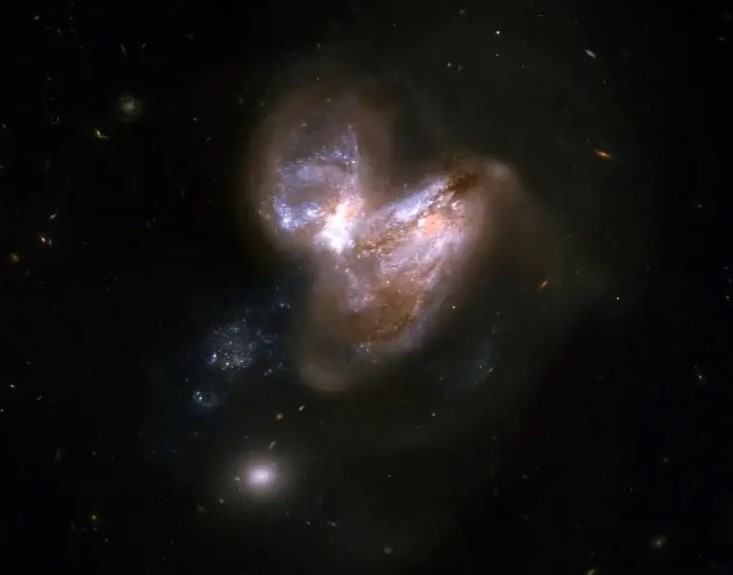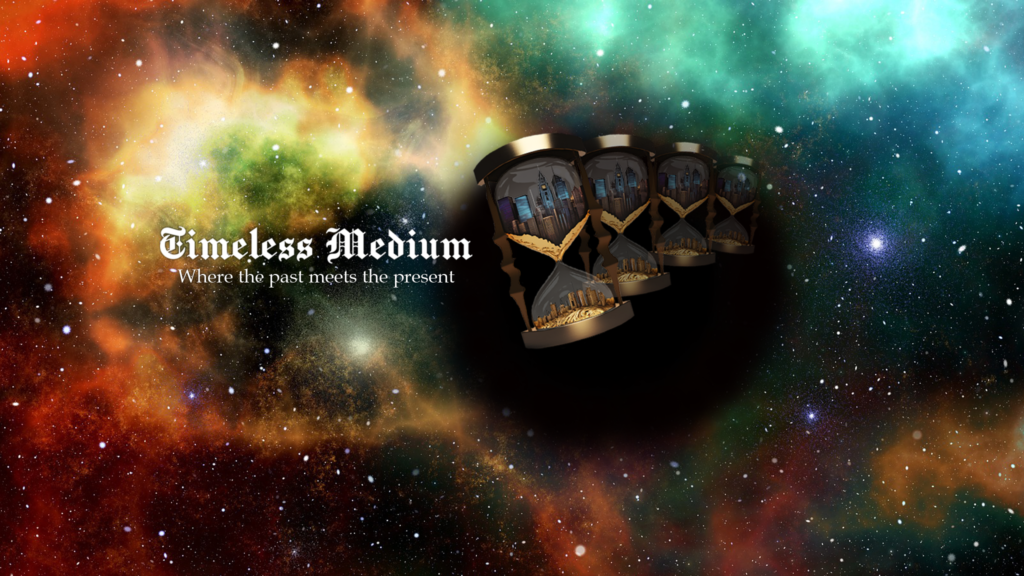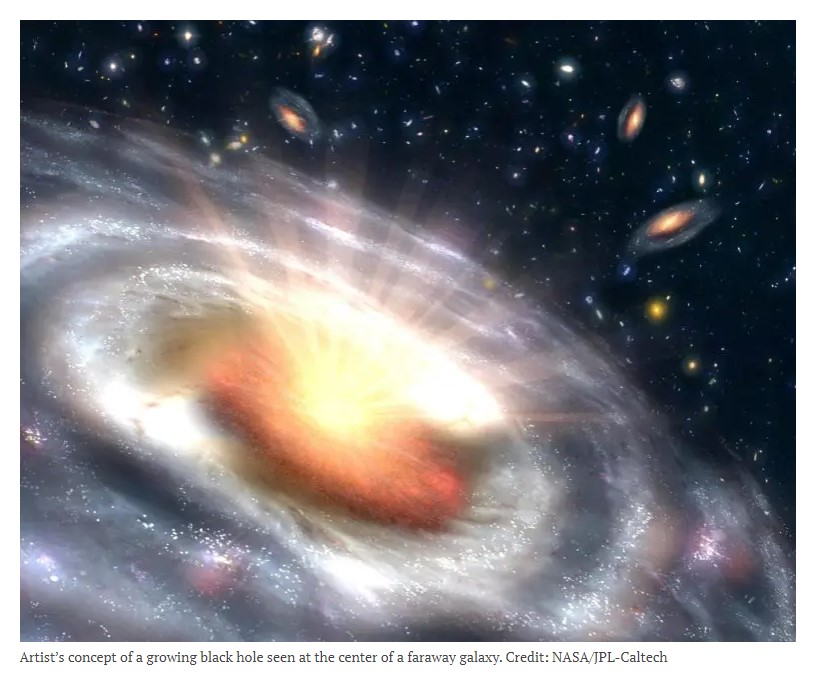Astronomers from the University of Texas and the University of Arizona have discovered a rapidly growing black hole in one of the most extreme galaxies known in the very early Universe. The discovery of the galaxy and the black hole at its center provides new clues on the formation of the very first supermassive black holes. The new work is published in Monthly Notices of the Royal Astronomical Society.
Using observations taken with the Atacama Large Millimeter Array (ALMA), a radio observatory sited in Chile, the team has determined that the galaxy, named COS-87259, containing this new supermassive black hole is very extreme, forming stars at a rate 1000 times that of our own Milky Way and containing over a billion solar masses worth of interstellar dust. The galaxy shines brightly from both this intense burst of star formation and the growing supermassive black hole at its center.
The black hole is considered to be a new type of primordial black hole – one heavily enshrouded by cosmic “dust,” causing nearly all of its light to be emitted in the mid-infrared range of the electromagnetic spectrum. The researchers have also found that this growing supermassive black hole (frequently referred to as an active galactic nucleus) is generating a strong jet of material moving at near-light speed through the host galaxy.
Today, black holes with masses millions to billions of times greater than that of our own Sun sit at the center of nearly every galaxy. How these supermassive black holes first formed remains a mystery for scientists, particularly because several of these objects have been found when the Universe was very young. Because the light from these sources takes so long to reach us, we see them as they existed in the past; in this case, just 750 million years after the Big Bang, which is approximately 5% of the current age of the Universe.

This system consists of a pair of galaxies, dubbed IC 694 and NGC 3690, which made a close pass some 700 million years ago. As a result of this interaction, the system underwent a fierce burst of star formation. In the last fifteen years or so six supernovae have popped off in the outer reaches of the galaxy, making this system a distinguished supernova factory. Credit: NASA, ESA, the Hubble Heritage Team (STScI/AURA)-ESA/Hubble Collaboration and A. Evans (University of Virginia, Charlottesville/NRAO/Stony Brook University)
What is particularly astonishing about this new object is that it was identified over a relatively small patch of the sky typically used to detect similar objects – less than 10 times the size of the full moon – suggesting there could be thousands of similar sources in the very early Universe. This was completely unexpected from the previous data.
The only other class of supermassive black holes we knew about in the very early Universe are quasars, which are active black holes that are relatively unobscured by cosmic dust. These quasars are extremely rare at distances similar to COS-87259, with only a few tens located over the full sky. The surprising discovery of COS-87259 and its black hole raises several questions about the abundance of very early supermassive black holes, as well as the types of galaxies in which they typically form.
Ryan Endsley, the lead author of the paper and now a Postdoctoral Fellow at The University of Texas at Austin, says “These results suggest that very early supermassive black holes were often heavily obscured by dust, perhaps as a consequence of the intense star formation activity in their host galaxies. This is something others have been predicting for a few years now, and it’s really nice to see the first direct observational evidence supporting this scenario.”
Similar types of objects have been found in the more local, present-day Universe, such as Arp 299 shown above. In this system, two galaxies are crashing together generating an intense starburst as well as heavy obscuration of the growing supermassive black hole in one of the two galaxies.
Endsley adds, “While nobody expected to find this kind of object in the very early Universe, its discovery takes a step towards building a much better understanding of how billion solar mass black holes were able to form so early on in the lifetime of the Universe, as well how the most massive galaxies first evolved.” (source)
Reference: “ALMA confirmation of an obscured hyperluminous radio-loud AGN at z = 6.853 associated with a dusty starburst in the 1.5 deg2 COSMOS field” by Ryan Endsley, Daniel P Stark, Jianwei Lyu, Feige Wang, Jinyi Yang, Xiaohui Fan, Renske Smit, Rychard Bouwens, Kevin Hainline and Sander Schouws, 24 February 2023, Monthly Notices of the Royal Astronomical Society.
DOI: 10.1093/mnras/stad266



Itís hard to come by experienced people about this subject, however, you sound like you know what youíre talking about! Thanks
Thank you so much for your kind words. It’s not my article. I have put the source in the document. Felt it was an interesting topic to share. How did you find my site?